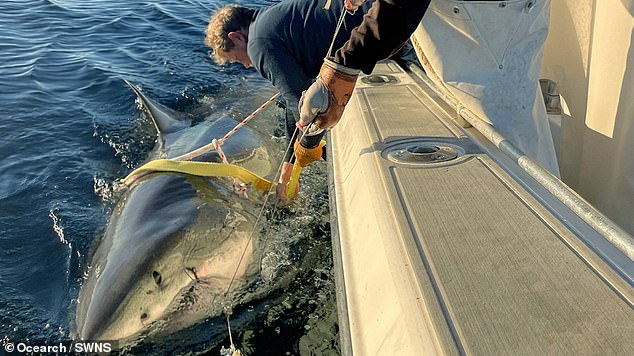
Unraveling the Mysterious Surge of Great White Sharks Along U.S. Coasts
Sharks Are Back: Why Growing Sightings Signal a Healthier Ocean
(Approx. 600 words)

Contender, a massive white shark tagged by OCEARCH, symbolizes rebounding shark populations.
Shark sightings near U.S. beaches are rising, but experts urge calm: this resurgence marks a conservation success. Chris Fischer, founder of marine nonprofit OCEARCH, explains that after decades of overfishing, protections have revived shark populations to 1950s levels. “We’re seeing ecosystems rebound,” he says, emphasizing sharks’ critical role as apex predators that balance marine life.
From Near Extinction to Abundance
In 2006, scientists warned that global large shark populations had plummeted to 9%. Overfishing, driven by practices like inshore gill nets (banned in the 1990s), devastated species. Today, thanks to laws like the 2020 Forage Fish Protection Act—safeguarding key prey like sardines—sharks are thriving. NOAA reports 50–70 shark species frequent U.S. coastlines, including blacktip, sandbar, and white sharks.

OCEARCH’s tagging program tracks shark movements to aid conservation.
Contrary to Jaws-era fears, “great white shark” is a Hollywood term; biologists use “white shark.” These predators migrate to U.S. coasts each summer for breeding and hunting. Fischer dismisses climate change as the driver of shoreline sightings, calling it a “fabricated concept.” Instead, sharks naturally herd prey like mackerel into shallow waters—a hunting tactic called “crowding.”
COVID’s Unseen Impact
The pandemic accelerated marine recovery. With reduced human activity and new fishing bans, baitfish populations exploded. “People returned to beaches in 2022 and saw ecosystems their grandparents might’ve witnessed,” Fischer says. Sharks, now abundant, regulate species from seals to small fish. “The ocean is returning to what it’s supposed to be,” he adds.

Fischer: Restoration efforts since the 1990s have revived ocean health.
Bigger Sharks, Healthier Oceans
With more food, sharks grow larger. In January, OCEARCH tagged Contender, a 14-foot, 1,600-pound male—the Atlantic’s largest recorded. White sharks take 30 years to mature and live up to 70 years. “The sharks protected in the ’90s are only now breeding,” Fischer notes. Future generations may dwarf even Contender.
Safety in Shark Waters
While attacks remain rare, hotspots exist:
- Florida: 942 incidents since 1837 (mostly white sharks).
- Hawaii: 199 attacks, often involving tiger sharks.
- Carolinas: Rising activity as sharks migrate north.

Sharks’ vision can mistake surfers for prey in certain conditions.
Fischer stresses coexistence: “We’ve swum with sharks all along—now there’s just more life to see.” As conservation continues, beachgoers should stay vigilant but celebrate the ocean’s revival. After all, a shark’s presence means the ecosystem is working.
Agencies urge swimmers to avoid dawn/dusk hours, heed signage, and stay grouped to minimize risks.

Contender’s migration highlights sharks’ expansive habitats.


